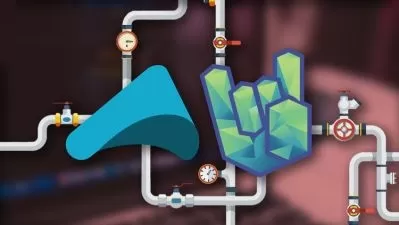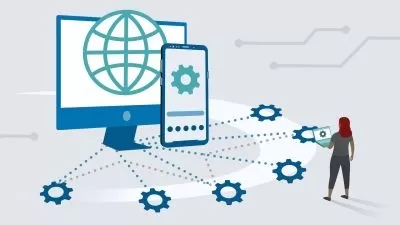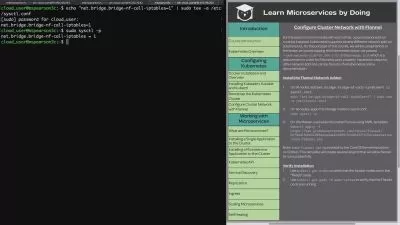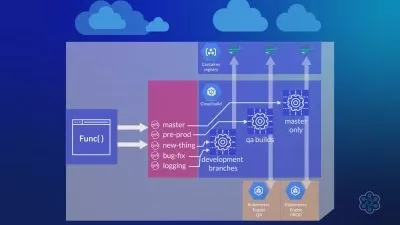About MicroservicesLearn More
Microservices enables developers to break apart applications into a series of decoupled cloud services, containerizing each individual piece. Through this software design method, engineers can implement necessary software changes more swiftly than with standard system architecture. Udemy offers a wide selection of microservices training to get you started or expand your developer skill set.
Sort by:
Sorting
The newest
Most visited
Course time
Subtitle
Filtering
Courses
Subtitle
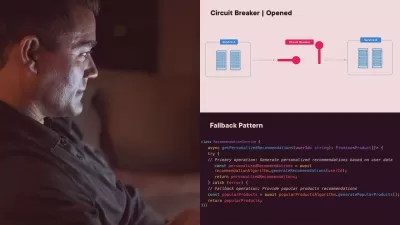
Pluralsight


Desmond Nyamador
Node.js Microservices: Resilience and Fault Tolerance 1:02:33
English subtitles
06/19/2024
Subtitle

Pluralsight


Rupesh Tiwari
Node.js Microservices: Advanced Topics and Best Practices 2:50:08
English subtitles
06/19/2024
Subtitle
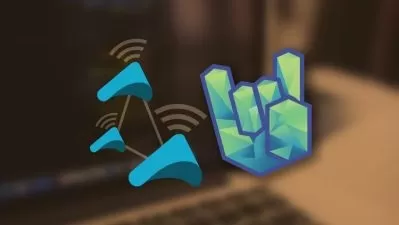
Udemy


Daniel Ciocîrlan
Akka Remoting and Clustering with Scala | Rock the JVM 6:50:14
English subtitles
05/27/2024
Subtitle
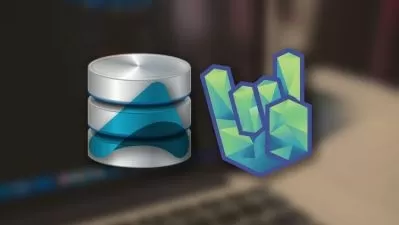
Udemy


Daniel Ciocîrlan
Akka Persistence with Scala | Rock the JVM 7:05:27
English subtitles
05/27/2024
Subtitle
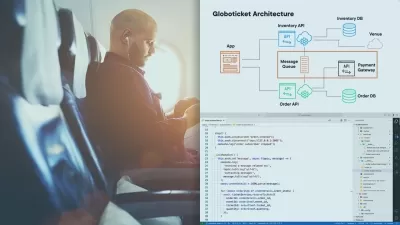
Pluralsight


Tyler Griffiths
Node.js Microservices: Testing and Continuous Integration 1:22:53
English subtitles
05/11/2024
Subtitle

Pluralsight


Travis Thomsen
Node.js Microservices: Deploying and Scaling 4:26:11
English subtitles
05/09/2024
Subtitle

Pluralsight


George Smith
Node.js Microservices: Authentication and Authorization 1:55:20
English subtitles
05/09/2024
Subtitle
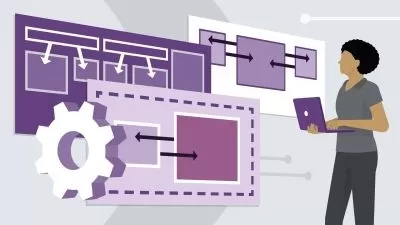
Linkedin Learning


Frank P Moley III
Microservices: Design Patterns 1:37:42
English subtitles
05/08/2024
Books
Frequently asked questions about Microservices
Microservices, or microservices architecture, is an approach to software and website development that breaks down a large project into multiple, independent chunks of code. Each code, called a microservice, gets developed to perform a specific function within the overall software package. Microservices, designed by separate teams, run independently and combine with other microservices to fulfill a larger goal. For example, an e-commerce site includes different functions to manage inventory, product catalogs, customer data, and billing information. With a microservices approach to site development, they would get separately developed and tested before being combined to create the final website. Microservices get compared to “monolithic” software architecture, in which the entire software package gets developed as a single unit.
While a microservices architecture takes more initial planning than a monolithic architecture, it offers distinct advantages in large-scale systems. A microservices architecture breaks down complex software projects into smaller components. Because each microservice gets developed separately, the architecture facilitates faster development times as they get designed in parallel rather than in sequence. Since each microservice operates independently, the engineer can update one microservice without the changes causing problems with other microservices. That saves a lot of testing and debugging time in the overall software project. Finally, a microservices architecture helps development teams understand the general code easily, making the software easier to maintain and deploy.
Microservices are used primarily by software developers, especially front-end developers, back-end developers, and full-stack developers. DevOps engineers also get familiar with microservices—as tech companies implementing Agile and DevOps teams will more likely take advantage of microservices benefits. While a microservices architecture could theoretically get used for any software, web developers commonly create complex websites and web-based applications with it.
Microservices architecture developers use various Java-based languages, libraries, and frameworks like React, Node.js, Spring Cloud, and Spring Boot since microservices help with software and application development. In addition, team communication remains critical when implementing microservices—the reason why development teams use tools such as Apache Kafka and RabbitMQ. Finally, containerization tools such as Kubernetes and Docker help developers manage the function, packaging, and collaboration of individual microservices.







